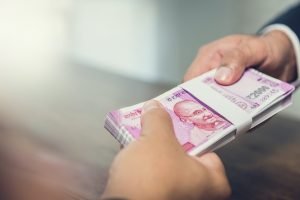In order to address the problem of BEPS, the Organization for Economic Co-operation Development (OECD) framed various Action Plans. BEPS (Base Erosion and Profit Shifting) Action Plan 1 suggested measures to address the challenges posed by the Digital Economy. Taking a cue from this Action Plan, India has been a front runner in implementing measures viz., Equalization Levy (EL) and Significant Economic Presence (SEP).
While the SEP-related provisions were first presented in 2018, the Finance Act of 2020 has replaced them. Furthermore, a threshold had to be established in order to qualify for SEP provisions. Recently, CBDT has issued a Notification notifying the threshold for the purpose of applying SEP provision.
What is SEP?
As per Explanation 2A to section 9(1)(i) of the Income-tax Act, 1961 (IT Act), the SEP of a non-resident in India shall constitute a business connection in India. For this purpose, the SEP means:
- A transaction involving the provision of any goods, services, or property by a non-resident in India. This includes the downloading of data or software, if the total of payments resulting from such transaction or transactions during the previous year exceeds the prescribed amount; or
- Systematic and continuous soliciting of business activities or engaging in interaction with such number of users as may be prescribed, in India through digital means:”
It further provided that the transactions or activities shall constitute a significant economic presence in India, whether or not the non-resident has a residence or place of business in India or renders services in India or agreement for such transactions/ activities entered in India.
SEP
The provision of SEP enlarges the scope of income of non-residents by establishing the business connection of non-residents in India. However, since thresholds were not notified since the introduction of SEP provision, practically the provision remained inoperative.
On 03rd May 2021, CBDT notified a threshold for SEP. This will come into effect from the 01st of April 2022. According to the notification issued in the official gazette by CBDT, Ministry of Finance:
- The number of aggregate payments arising from the transaction(s) in respect of any goods, services or property carried out by a non-resident with any person resident in India, including the provision of download of data/ software in India during the year shall be Rs. 2 crores (approximately USD 2,71,000/-);
- The number of users with whom systematic and continuous business activities are solicited or who are engaged in interaction shall be 3 lakhs.
Our Comments
- CBDT notification is silent on how the profit attribution would be done.
- The threshold of aggregate payment of Rs. 2 crores and the user base of 3 lakhs. Itseems quite low considering the user base in India of a few e-commerce giants such as Facebook or Google.
- Existing DTAAs will not cover the proposed change unless DTAAs are re-negotiated. Accordingly, non-residents of the treaty jurisdiction can take recourse to the beneficial provision of DTAA. Consequently, the relevance of the amendment may be restricted till the time treaty benefit is available.
- However, non-residents of a non-treaty jurisdiction may need to assess the impact.
- The interplay between Equalisation Levy and SEP needs to be looked into when both provisions is in force parallelly.




